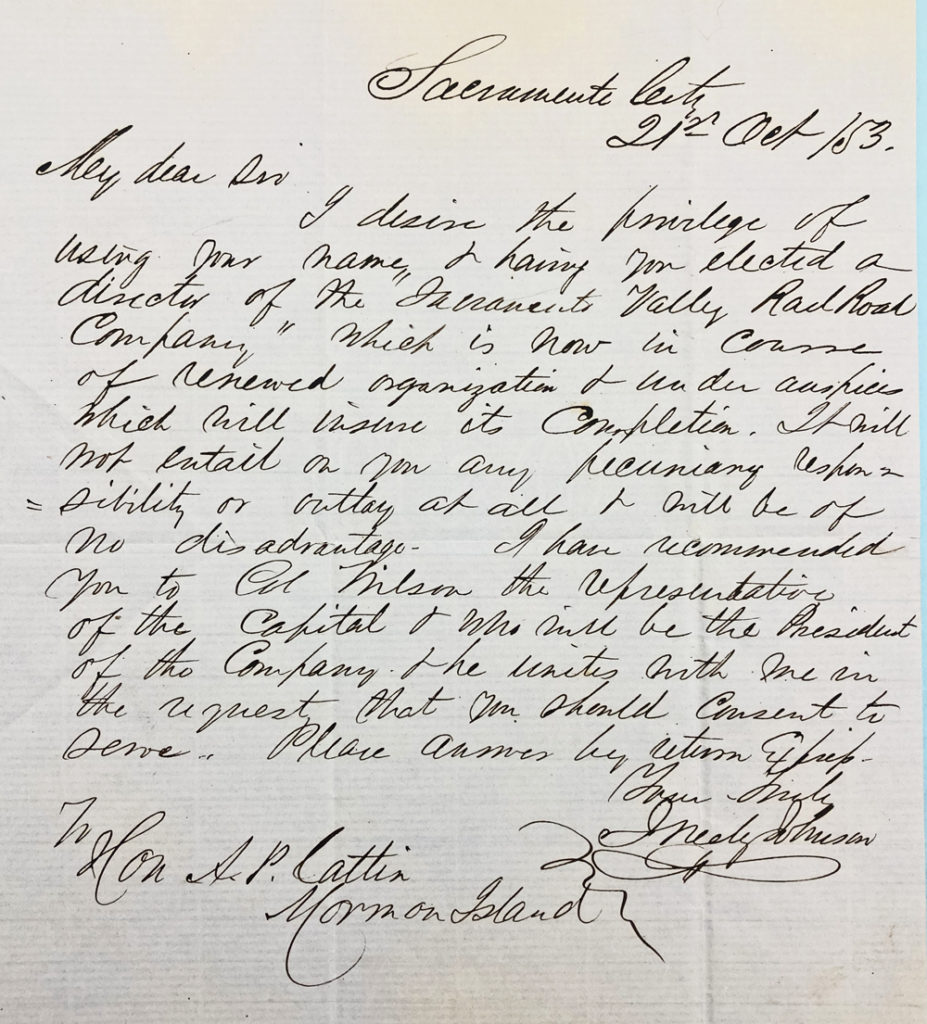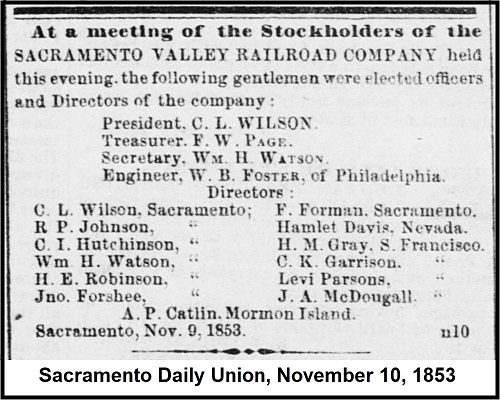It was a short letter. There was little risk to investment or reputation. J. Neely Johnson, State Assemblymember and Sacramento attorney, wrote to Amos Catlin in 1853 asking him to consider becoming a board member of the Sacramento Valley Railroad.

Sacramento City, 21st Oct 1853
My dear Sir,
I desire the privilege of using your name and having you elected a director of the Sacramento Valley Rail Road Company, which is now in coarse of a renewed organization and under auspices which will insure its completion.
It will not entail on you any pecuniary responsibility or outlay at all and will be of no disadvantage. I have recommended you to Col. Wilson the representative of the capital and who will be the President of the company and he unites with me in the request that you should consent to serve.
Please answer by return express. Yours Truly, J Neely Johnson
To Hon. A.P. Catlin, Mormon Island

Johnson and Catlin Part of Sacramento History
Like J. Neely Johnson, Catlin was also a member of the Whig political party. Catlin had been elected to the Senate in 1852 and was set to serve his second year in 1854. In 1851, Catlin had organized the Natoma Water Company. The Natoma Company had nearly completed their water canals from the South Fork of the American River down to Negro Bar, Willow Springs and Alder Creek.
Negro Bar was to be the terminus of the first leg of the Sacramento Valley Railroad. While Catlin was straining under debt to get the water ditches completed and investment in a sawmill in Shingle Springs, he was seen as an ethical and honest businessman and politician. Catlin was from New York and having him as a board member probably helped Wilson raise the necessary money to continue planning the railroad from Sacramento to Negro Bar.

Catlin would take a seat on the board and become acquainted Col. Charles Lincoln Wilson, Theodore Judah, and Captain Joseph L. Folsom. Catlin would become an investor in Wilson’s California Central Railroad and Theodore Judah’s American River Railroad. Catlin’s first career interest was law, not railroads or water projects. He would eventually move to Sacramento permanently and practice law. In 1890 he was elected a Sacramento County Superior Court Judge.
J. Neely Johnson Governor of California
J. Neely Johnson was involved in Sacramento City from its earliest days. He sat on the Common Council and in 1851 was the attorney to the council. After serving in the Assembly, Johnson would be nominated as a candidate for governor of California under the American Party in 1855. Johnson would defeat John Bigler to become California’s 4th governor.
The letter from J. Neely Johnson to Amos Catlin is of little consequence. It is a footnote of trivia in the building of the Sacramento Valley Railroad. In a larger context, the invitation to Catlin from Johnson provides a glimpse of the people involved in the early development of the railroad and how the community was connected.


